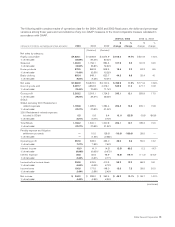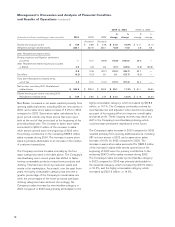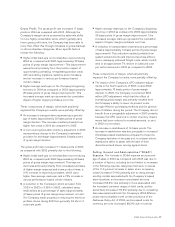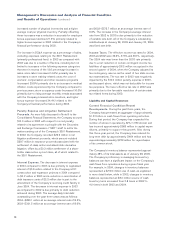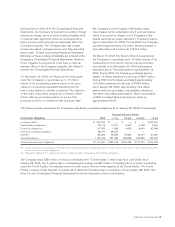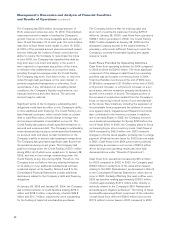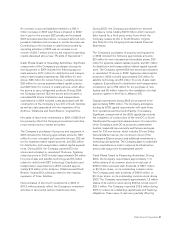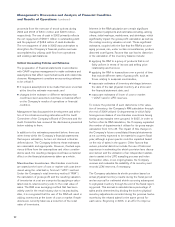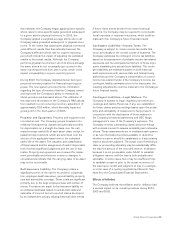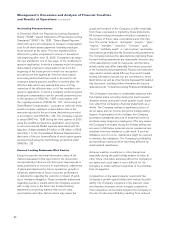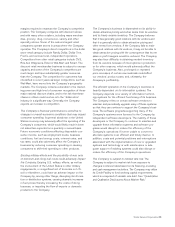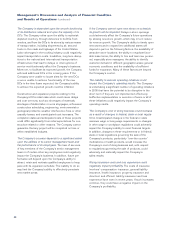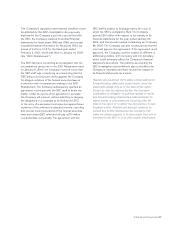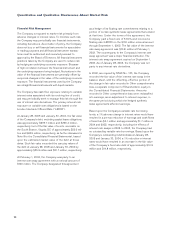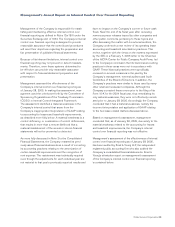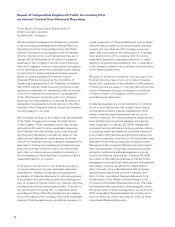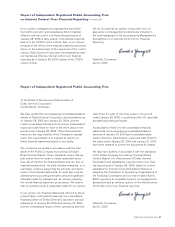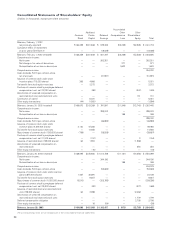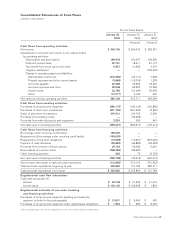Dollar General 2004 Annual Report Download - page 27
Download and view the complete annual report
Please find page 27 of the 2004 Dollar General annual report below. You can navigate through the pages in the report by either clicking on the pages listed below, or by using the keyword search tool below to find specific information within the annual report.Dollar General Corporation 25
margins required to maintain the Company’s competitive
position. The Company competes with discount stores
and with many other retailers, including mass merchan-
dise, grocery, drug, convenience, variety and other
specialty stores. Some of the nation’s largest retail
companies operate stores in areas where the Company
operates. The Company’s direct competitors in the dollar
store retail category include Family Dollar, Dollar Tree,
Fred’s, and various local, independent operators.
Competitors from other retail categories include CVS,
Rite Aid, Walgreens, Eckerd, Wal-Mart and Kmart. The
discount retail merchandise business is subject to excess
capacity and some of the Company’s competitors are
much larger and have substantially greater resources
than the Company. The competition for customers has
intensified in recent years as larger competitors, such as
Wal-Mart, have moved into the Company’s geographic
markets. The Company remains vulnerable to the market-
ing power and high level of consumer recognition of these
major national discount chains, and to the risk that these
chains or others could venture into the “dollar store”
industry in a significant way. Generally, the Company
expects an increase in competition.
TheCompany’sfinancialperformanceissensitiveto
changesinoveralleconomicconditionsthatmayimpact
consumerspending. A general slowdown in the United
States economy may adversely affect the spending of the
Company’s consumers, which would likely result in lower
net sales than expected on a quarterly or annual basis.
Future economic conditions affecting disposable con-
sumer income, such as employment levels, business
conditions, fuel and energy costs, interest rates, and
tax rates, could also adversely affect the Company’s
business by reducing consumer spending or causing
consumers to shift their spending to other products.
Existingmilitaryeffortsandthepossibilityofwar,acts
ofterrorismandrisingfuelcostscouldadverselyimpact
theCompany. Existing U.S. military efforts, as well as
the involvement of the United States in other military
engagements, or a significant act of terrorism on U.S.
soil or elsewhere, could have an adverse impact on the
Company by, among other things, disrupting its informa-
tion or distribution systems, causing dramatic increases
in fuel prices thereby increasing the costs of doing
business, or impeding the flow of imports or domestic
products to the Company.
TheCompany’sbusinessisdependentonitsabilityto
obtainattractivepricingandothertermsfromitsvendors
andtotimelyreceiveinventory.The Company believes
that it has generally good relations with its vendors and
that it is generally able to obtain attractive pricing and
other terms from vendors. If the Company fails to main-
tain good relations with its vendors, it may not be able to
obtain attractive pricing with the consequence that its net
sales or profit margins would be reduced. The Company
may also face difficulty in obtaining needed inventory
from its vendors because of interruptions in production
or for other reasons, which would adversely affect the
Company’s business. Also, prolonged or repeated
price increases of certain raw materials could affect
our vendors’ product costs, and, ultimately, the
Company’s profitability.
TheefficientoperationoftheCompany’sbusinessis
heavilydependentonitsinformationsystems.The
Company depends on a variety of information technol-
ogy systems for the efficient functioning of its business.
The Company relies on certain software vendors to
maintain and periodically upgrade many of these systems
so that they can continue to support the Company’s busi-
ness. The software programs supporting many of the
Company’s systems were licensed to the Company by
independent software developers. The inability of these
developers or the Company to continue to maintain and
upgrade these information systems and software pro-
grams would disrupt or reduce the efficiency of the
Company’s operations if it were unable to convert to
alternate systems in an efficient and timely manner. In
addition, costs and potential problems and interruptions
associated with the implementation of new or upgraded
systems and technology or with maintenance or ade-
quate support of existing systems could also disrupt or
reduce the efficiency of the Company’s operations.
TheCompanyissubjecttointerestraterisk.The
Company is subject to market risk from exposure to
changes in interest rates based on its financing, investing
and cash management activities. The Company may utilize
its Credit Facility to fund working capital requirements,
which is comprised of variable rate debt. See “Quantitative
and Qualitative Disclosures About Market Risk.”


